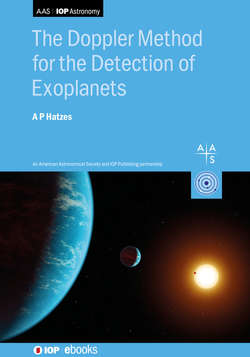Читать книгу The Doppler Method for the Detection of Exoplanets - Professor Artie Hatzes - Страница 11
На сайте Литреса книга снята с продажи.
1.2 Early Work on Stellar Radial Velocity Measurements
ОглавлениеThe first attempts to measure stellar RV measurements date to the 19th century, when Huggins (1868) visually observed the displacement of stellar hydrogen Balmer lines with respect to those from a hydrogen discharge tube. The “founder” of modern stellar RVmeasurement arguably falls on the German astronomer Herman Carl Vogel, who systematically applied photography in stellar RV measurements. He studied astronomy at the German universities of Leipzig and Jena, and his accomplishments were pioneering. Vogel was the first to measure the rotation of the Sun using Doppler shifts of the approaching and receding limbs. His RV measurements first detected an unseen stellar companion to an eclipsing binary (Vogel 1890, p. 27) using the Doppler method, noting that “…before a minimum Algol was moving away from the Sun, and after a minimum it was moving toward it.”
Because the RV precision was of the order of several km s−1, early work focused largely on the study of binary stars. Figure 1.2 shows the velocity curve of the spectroscopic binary star HD 36954 taken with the 36 inch refractor at Lick Observatory in the mid-1930s (Neubauer 1936). The RV measurements have a scatter of 6.9 km s−1, typical of the RV precision of that era.
Figure 1.2. Orbital motion of HD 36954 (curve) calculated from radial velocity measurements taken from 1932–1935 using the 36 inch refractor at Lick Observatory (Neubauer 1936). The scatter about the orbital solution is 6.9 km s−1.
The first astronomer to recognize that stellar RV measurements could be used to detect exoplanets was Otto Struve. He was a Russian-born astronomer who did most of his astronomical work in the United States. Struve served as director of the Yerkes, McDonald, and National Radio Astronomy Observatories. As a director, he could recognize talent, having hired Subrahmanyan Chandrasekhar and Gerhard Herzberg, two future Nobel Prize winners.
Struve was also a visionary. His remarkable paper “Proposal for a Project of High-precision Stellar Radial Velocity Work” (Struve 1952) was the first to propose using Doppler measurements to search for exoplanets. The discovery of 51 Peg b in 1995—a giant planet in a 4.2 day orbit—was foreseen by Struve. In his paper, p. 200, he argued that “we know that stellar companions can exist at very small distances. It is not unreasonable that a planet might exist at a distance of 1/50 of an astronomical unit. Such short-period planets could be detected by precise radial velocity measurements.” His predictive powers did not stop there. He goes on to say that “there would, of course, also be eclipses … and the loss of light in stellar magnitudes is about 0.02.” Struve not only foresaw the possibility of short-period Jupiter-mass planets, but the use of the transit method to characterize the density. His proposal did not result in the “powerful” spectrograph he advocated, which only shows that science has its own “prophets” who are often ignored. The discovery of exoplanets still had to wait another half century.
